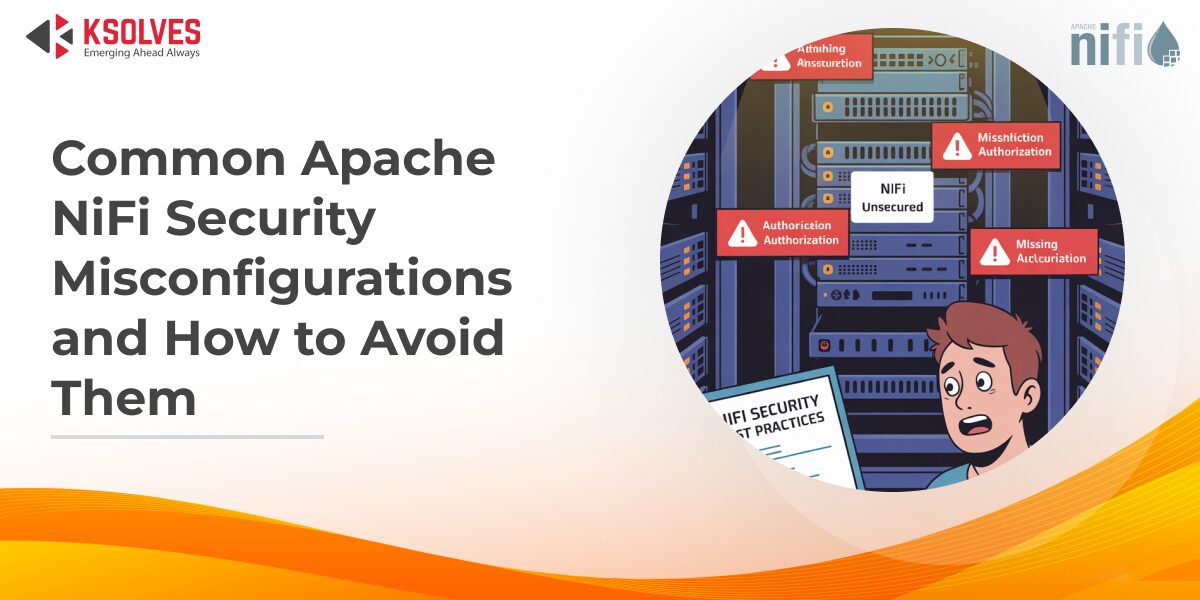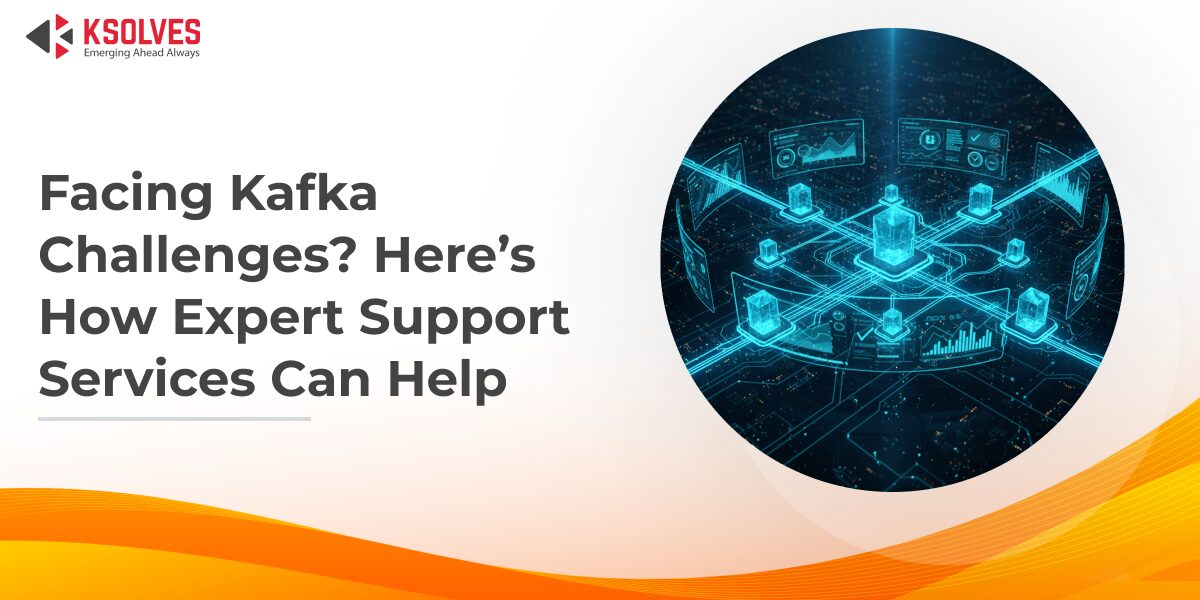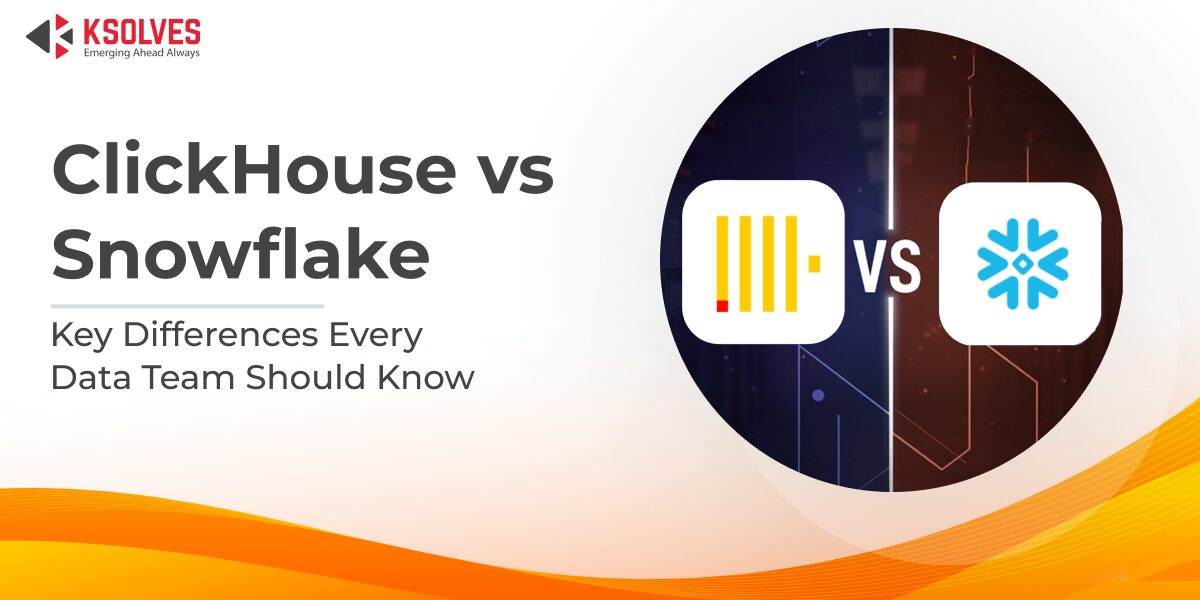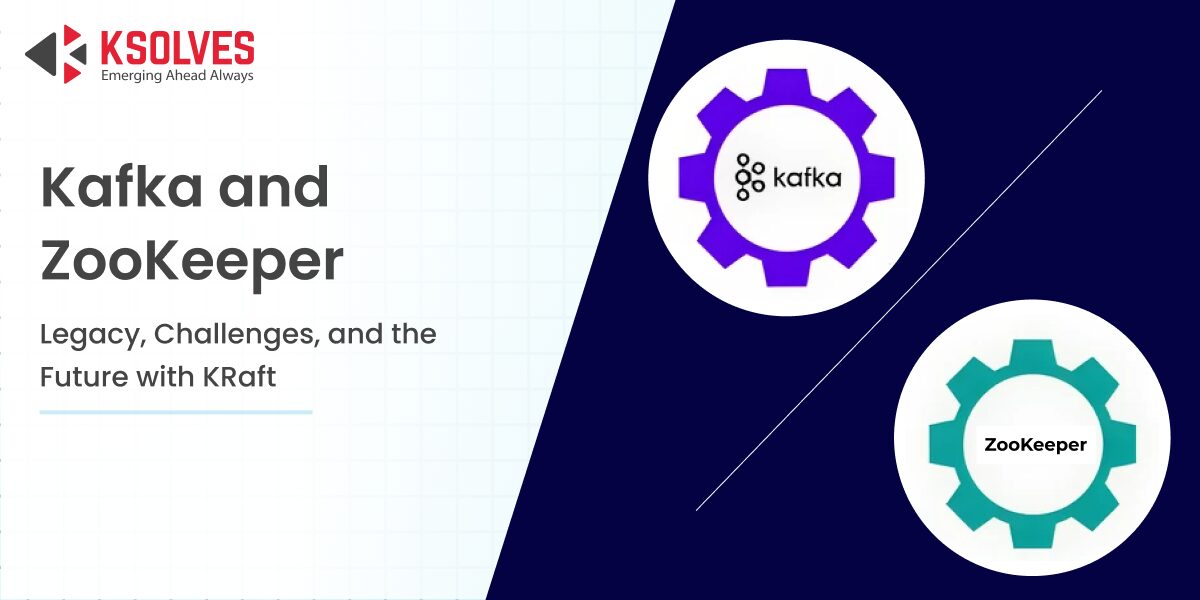Common Apache NiFi Security Misconfigurations and How to Avoid Them
Big Data
5 MIN READ
October 29, 2025
![]()

Apache NiFi is widely used by enterprises to move and manage data across different systems. It’s popular because it’s flexible, scalable, and can connect almost anything, from IoT sensors to real-time log streams. But this same flexibility also makes it easy to misconfigure. For NiFi security, you need to set it up carefully using tools like TLS encryption, access policies, multi-tenant authorization, and repository encryption. In practice, many teams overlook these features because their first goal is to “just get the data flowing.” Security often gets pushed aside until later.
But it’s very risky, because NiFi isn’t just moving random files; it’s handling sensitive data like customer details, passwords, financial transactions, and personal information. If it’s not secured properly, attackers can gain direct access to this data in real time. Beyond technical issues, this leads to compliance violations (GDPR, HIPAA), loss of customer trust, and serious business damage. Here in this blog, we discuss some common Apache NiFi security misconfigurations that you should always consider:-
Common Apache NiFi Security Misconfigurations (and How to Fix Them)
Running NiFi Without Strong TLS Everywhere
The mistake: Many teams spin up NiFi by using HTTP for convenience or accept self-signed certificates without validating them properly. Others configure TLS but leave weak ciphers or mismatched keystores/truststores.
Why it’s risky: NiFi handles sensitive payloads like database credentials, customer information, and flow definitions. If traffic isn’t fully encrypted and verified, attackers can intercept or alter that data in transit. A man-in-the-middle (MITM) attack could even compromise provenance records, creating a false audit trail.
Fix it:
- Always configure HTTPS with a proper keystore and truststore (the NiFi TLS Toolkit can simplify setup).
- Enforce modern standards: disable TLS 1.0/1.1, prefer TLS 1.2 or 1.3, and prune weak ciphers.
- Ensure certificate CN/SANs match the hostnames NiFi nodes use (critical for clustering).
- Rotate certificates regularly as part of your DevSecOps routine.
Treating “Single User” Mode as Production Security
The mistake: Leaving NiFi in “single-user” mode or giving everyone the same admin credentials. Single-user mode is simple, and in development environments, it works fine. But some teams never migrate to proper identity and access management when moving to production.
Why it’s risky:
- No least-privilege access—everyone is an admin.
- No audit trail—you can’t prove who made a change.
- If credentials leak, the entire system is at risk.
Fix it:
- Integrate enterprise authentication systems such as LDAP, Kerberos, or OIDC.
- Use NiFi’s multi-tenant authorization model to define granular permissions—view vs. modify, component-level policies, etc.
- Review permissions quarterly to ensure ex-employees or contractors no longer have access.
- Create separate “ops,” “dev,” and “audit” roles with scoped rights.
Blank or Weak nifi.sensitive.props.key
The mistake: Not setting the sensitive property key or using a simple word like “admin.” Many teams are unaware that NiFi uses this key to encrypt sensitive processor properties (like DB passwords) in its configuration files. They leave it empty, assuming values are secure by default.
Why it’s risky: Passwords and API keys can be read directly from the flow configuration on disk. Anyone with server access could harvest secrets in minutes.
Fix it:
- Set a strong, random nifi.sensitive.props.key.
- Store it in a secure location (e.g., a vault) instead of leaving it in plain text on disk.
- Prefer Parameter Contexts for sensitive values; they separate secrets from flow logic.
- If you need to rotate the key, do it in a controlled change window to avoid breaking processors.
Unencrypted Repositories (FlowFile, Content, Provenance)
The mistake: NiFi’s repositories, where it stores queued FlowFiles, raw content, and provenance events, are often left unencrypted. Encryption isn’t enabled by default, and enabling it can have a small performance impact, so teams delay it.
Why it’s risky: If a disk or server is compromised, attackers can directly read sensitive data and lineage information. Provenance events could expose entire business transactions.
Fix it:
- Enable AES-GCM encryption for all repositories.
- Configure a secure key provider (integrated with your enterprise KMS, HSM, or vault).
- Test encryption in staging while performance overhead exists; modern hardware usually handles it efficiently.
- Regularly back up encrypted repositories to avoid corruption issues.
Insecure Site-to-Site (S2S) Communication
The mistake: Allowing anonymous or certificate-less S2S connections, or leaving firewall ports wide open. Teams prioritize data transfer speed and flexibility, skipping full certificate validation.
Why it’s risky: Unauthorized systems could send fake data or siphon real data out of your pipeline. S2S without mutual TLS makes impersonation trivial.
Fix it:
- Enforce mutual TLS so both sender and receiver validate each other.
- Restrict input ports to known hosts via firewall rules.
- Apply NiFi access policies to ports—restrict who can send/receive data.
- Regularly test certificate chains to ensure trust is end-to-end.
Unsecured ZooKeeper & Cluster Internals
The mistake: Running a NiFi cluster without securing ZooKeeper, using short hostnames, or outdated versions without TLS support. ZooKeeper is “under the hood” and often overlooked in hardening checklists.
Why it’s risky: Attackers could hijack the leader election, inject a fake state, or destabilize the cluster. That means downtime or malicious data flows.
Fix it:
- Secure ZooKeeper with Kerberos/SASL or TLS.
- Use fully-qualified domain names (FQDNs) for consistency.
- Apply strict ACLs on znodes so unauthorized clients can’t modify state.
- Keep ZooKeeper patched alongside NiFi upgrades.
NiFi Registry Left Half-Secured
The mistake: Securing NiFi but not applying the same rigor to NiFi Registry. Teams see Registry as a “supporting tool,” not realizing it stores flow definitions and version history.
Why it’s risky: Attackers could push malicious flows or exfiltrate past versions. That compromises both data and DevOps pipelines.
Fix it:
- Enable TLS and align Registry authorizers with NiFi users/groups.
- Apply least-privilege policies (developers commit, ops deploy, auditors view).
- Log and monitor Registry activities the same way you do NiFi itself.
Debug Logging That Leaks Secrets
The mistake: Enabling DEBUG logging globally or for sensitive processors. Developers need troubleshooting visibility, but forget to turn logging back down.
Why it’s risky: Credentials or token values may appear in logs, which are often centralized in monitoring tools, widening exposure.
Fix it:
- Keep production logs at INFO or WARN.
- If DEBUG is essential, scope it narrowly and for short periods.
- Sanitize logs or use log-masking filters for sensitive fields.
- Rotate and scrub logs to limit retention of secrets.
Over-Permissive Controller Services & Weak Downstream Security
The mistake: Configuring controller services (JDBC, HTTP, SMTP) with “trust all certificates” or disabling hostname verification. Teams prioritize connectivity and overlook validation, especially when integrating with legacy services.
Why it’s risky: MITM attacks can inject or steal data, and plain-auth downstream connections expose usernames and passwords.
Fix it:
- Enforce strict TLS certificate validation.
- Pin trusted CAs for outbound connections.
- Use least-privilege downstream accounts (e.g., read-only DB roles).
- Store credentials securely in vaults instead of embedding in configs.
No Backpressure or Quotas-Self-Inflicted DoS
The mistake: Letting connections grow indefinitely without backpressure. It happens because teams assume NiFi can “just scale” without limits.
Why it’s risky: Unlimited queues fill memory/disk, slowing or crashing NiFi. To outsiders, it may look like a denial-of-service attack.
Fix it:
- Set object-count and data-size backpressure on every connection.
- Use prioritizers to ensure critical data isn’t stuck behind large files.
- Implement rate limiting or drop policies for non-essential data under load.
Exposing the UI Directly to the Internet
The mistake: Running NiFi UI on a public IP without network controls. Teams want easy access for distributed developers or admins.
Why it’s risky: Exposing the UI invites brute-force attacks, exploits, and reconnaissance. Once compromised, attackers have full control of data flows.
Fix it:
- Put NiFi behind a hardened reverse proxy or WAF.
- Enforce IP allowlists and require MFA at the identity provider level.
- Enable strong TLS with security headers like HSTS and CSP.
- Only expose the minimal necessary ports externally.
Weak OS-Level Hardening
The mistake: Running NiFi as root, leaving config directories world-readable, or skipping OS security updates. It happens because default OS setups are rarely revisited after initial NiFi installation.
Why it’s risky: A NiFi exploit gives attackers full system privileges, letting them tamper with other apps or exfiltrate data beyond NiFi.
Fix it:
- Run NiFi as a dedicated non-root user.
- Restrict permissions for conf/, repositories, and log files.
- Regularly patch the OS, JVM, and NiFi itself.
- Monitor host-level security with intrusion detection or endpoint tools.
Choose Ksolves as Your Trusted NiFi Partner
At Ksolves, we provide end-to-end Apache NiFi consulting, implementation, and support services. Our team of certified experts helps enterprises secure, scale, and optimize their NiFi environments. Whether it’s upgrading to the latest version, hardening your NiFi cluster against security risks, or designing reliable data flows, we ensure a smooth and hassle-free process. With our expertise, you can focus on business growth while we take care of NiFi’s performance and security.
Wrapping Up
Apache NiFi is a powerful tool, but its flexibility often tempts teams to prioritize speed over security. Misconfigurations, such as weak TLS, unsecured repositories, or leaving the UI exposed to the internet, can lead to severe risks, from data breaches to compliance failures. By following best practices such as enforcing TLS everywhere, enabling role-based access, encrypting repositories, and properly securing ZooKeeper and NiFi Registry, you can safeguard sensitive business data and maintain trust.
If your organization is seeking expert guidance in securing and scaling Apache NiFi, Ksolves can assist. Our certified NiFi specialists provide tailored consulting, implementation, and ongoing support to ensure your data pipelines remain both high-performing and fully secure.
![]()







AUTHOR
Big Data
Anil Kushwaha, Technology Head at Ksolves, is an expert in Big Data. With over 11 years at Ksolves, he has been pivotal in driving innovative, high-volume data solutions with technologies like Nifi, Cassandra, Spark, Hadoop, etc. Passionate about advancing tech, he ensures smooth data warehousing for client success through tailored, cutting-edge strategies.
Share with